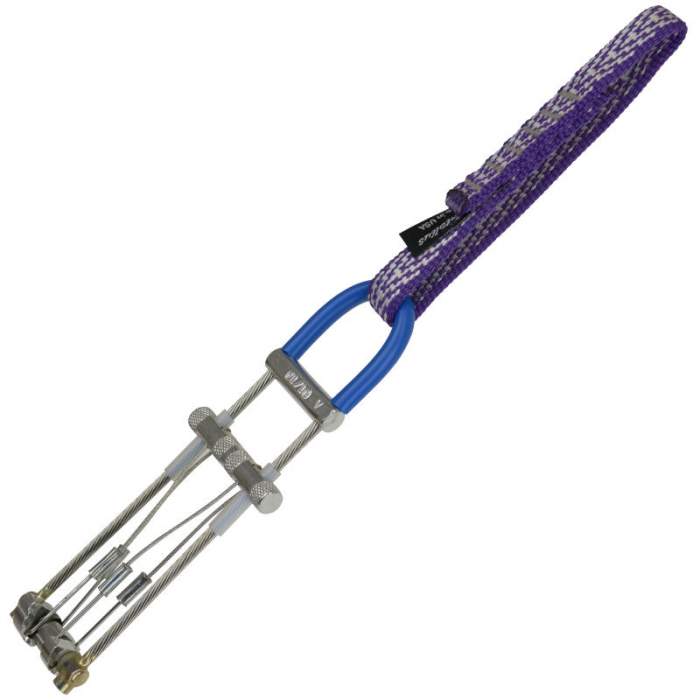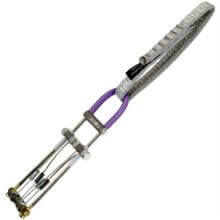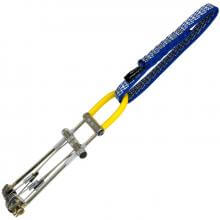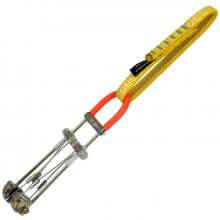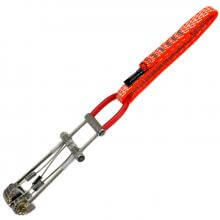How to use Metolius Cam, how cam works, lifespan, care and maintenance with instructional pictures.
Ultralight Offset TCU 0/1
Description
• Tried-and-true TCUs are now available to fill tricky flaring cracks and pin scars
• Offsets are composed of two small lobes and one larger lobe
• Direct Axle Technology™ (DAT™) makes Ultralight TCUs the lightest 3-cam units in the world!
• DAT allows for more placement options in shallow, narrow, or bottoming placements
• DAT makes tricky placements easier due to better cam lobe visibility, especially in the small sizes
• 13 mm (0.51") Monster Sling webbing (36% Dyneema/64% nylon)
• Range Finder tells you at a glance if you've chosen the right size cam for the placement
• Optimized cam angle for more outward force
• Wider cam faces for more grip
• U-shaped body for greater durability and unparalleled control during placement and retraction
• Machined cam stops
• Color-coded sewn slings and tubing
• CNC machined for much greater precision than stamped or extruded cams
• 7075-T6 aluminum
• Sizes #00/0-#3/4
• Hand built, inspected and individually proof tested in Bend, Oregon
Retail price
When you click a link below and then checkout online, no matter what you buy (climbing gear or not), we get a small commission that helps us keep this site up-to-date. Thanks!
Weight (g / oz)  Weight (g / oz)In grams and ounces, the weight, as stated by the manufacturer/brand. | 47.0 g / 1.70 oz |
| Cam Head | 3 lobes, single axle |
| Offset | Yes offset |
| Stem | Flexible single stem |
| Sling | 11 cm x13 mm Nylon / Polyamide (single sling loop) |
| Camming Angle | 13.25° (angle is consistent throughout) |
| Active Strength | 5 kN |
Cam Range (mm / in)  Cam Range (mm / in)In millimeters and inches, the maximum dimensions of the cam lobes when shut tight and fully extended. Since the "usable" range is so debatable, all manufacturers now list the full dimensions to avoid selling themselves short. For offset cams, we'll list the max dimensions possible and then afterwards list each of lobe dimensions. |
Offset range 11.1 - 16.5 mm (0.44 - 0.65 in) |
| Materials | Main Material: 7075-T6 aluminum |
| Certification | CE, UIAA |
No reviews yet.
Light, practical, and relatively inexpensive, the TCU is absolutely the most valuable cam for aiding; bring them on every big wall route. I recommend sizes 1-4, as they fit in pin scars and pods everywhere in Zion. The small offset TCUs are fantastic for thin aid climbing as well. The biggest drawback of these pieces is their lack of flexibility. In meandering cracks or climbs with multiple cracks, they can walk and become a lot less secure; if in doubt, put a sling on that cam. I also get a lot of use out of the Metolius Master cam. The black #5 Master Cam is perfect for that terrible size between fingers and hands where other cams would be insecure. For Master Cams #2 and below (yellow, blue, purple, and grey), I feel the lobes are too narrow, providing less surface area than other cams in this size range. The smaller Master Cams can also be awkward because the width of the trigger can cause problems when placed deep in a crack.
Like most new gear, the Offsets do have a learning curve, but once you are in tune with where they can be placed these cams open up a lot of opportunities for protecting cracks, grooves and horizontals. Aside from those two imperfections, I'm very impressed with the Offsets. Adding these to my collection has made my trad rack much more versatile; they absolutely excelledin the granite cracks of Mont Blanc and even tagged along with me in the desert. While they are not the best choice for Indian Creek splitters, funky, flared cracks—on both free and aid routes—are their forte.
Pros: Lightweight; less expensive compared to other cams on the market; tapered design protects flairs and pin scars effectively.
Cons: Bulky stem design; confusing color-coding.
Beth Rodden shows you how to inspect and maintain your cams.
The UIAA equipment standard provides a baseline for equipment performance in a test lab under controlled conditions on new equipment. Although these test conditions are relevant to the conditions encountered climbing, conditions encountered at the crags and the condition of the equipment are equally important. This recommendation from the UIAA member federation The British Mountaineering Council (BMC) provides vital equipment information that is NOT explicitly addressed in the standard, particularly failure modes of the equipment and recommendations for the use, inspection, maintenance, and retirement of equipment.
A pictoral representation of the UIAA-125 and EN-12276 standards for frictional anchors (which includes SLCD's [cams] and Ballnuts).

